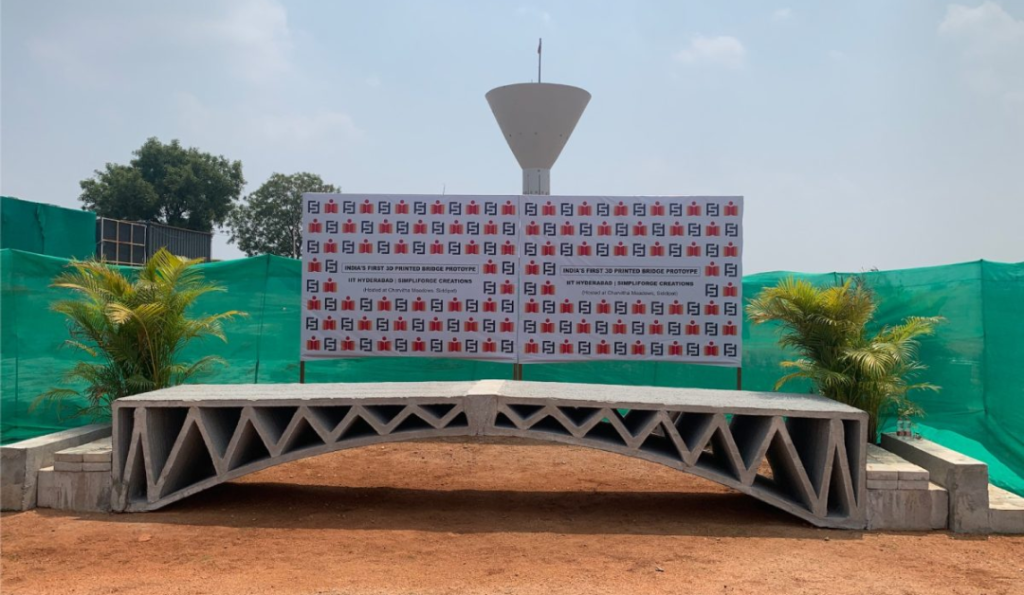In a groundbreaking development that blends cutting-edge technology with strategic defense needs, India has successfully built its first-ever 3D-printed military bunker at a staggering altitude of 11,000 feet in the mountainous region of Leh, Ladakh. The feat symbolizes a major leap forward in the modernization of India’s defense infrastructure—especially in high-altitude, remote, and operationally critical areas.
🧱 Project PRABAL: Forging Innovation in the Himalayas
This milestone is part of Project PRABAL, a visionary initiative designed to revolutionize defense construction through additive manufacturing. The project was spearheaded by a collaborative effort between the Indian Army, Indian Institute of Technology Hyderabad (IIT-H), and Simpliforge Creations, a deep-tech startup specializing in 3D construction printing.
The goal? To engineer and deploy rapid, reliable, and resilient structures that can support troops in high-stress, extreme environments while reducing construction time and labor-intensive processes.
🏔️ Engineering Against the Elements
Constructing at 11,000 feet is no small feat. The region experiences oxygen scarcity, sub-zero temperatures, and intense ultraviolet radiation—factors that traditionally slow down or halt conventional construction.
To overcome these hurdles, the team developed an advanced, field-deployable 3D robotic construction printer—India’s first of its kind capable of operating under such hostile conditions. The technology enabled:
- Full robotic deployment within 24 hours
- Structural 3D printing completed in 14 hours
- Complete installation and operational readiness in just 5 days
The resulting bunker meets standard operational requirements and can be used as a standard-issue soldier accommodation unit, offering protection and comfort in one of the most unforgiving terrains on Earth.
🧪 What Makes the Bunker Special?
Unlike traditional constructions that require heavy materials, manual labor, and long logistics chains, this 3D-printed bunker leverages:
- Advanced composite cementitious material suited for extreme cold
- Thermal insulation for high-altitude deployment
- Structural strength to endure snow loads and seismic tremors
- Sustainable construction with reduced carbon footprint
It’s not just a bunker—it’s a proof of concept for the future of military-grade construction technology in India.
🔍 Why This Matters: Strategic and Technological Implications
This development isn’t just about innovation—it’s about enhancing tactical preparedness and reducing logistical dependency in high-risk zones. The Indian Army can now look to:
- Deploy shelters in days, not weeks
- Minimize human risk during construction
- Customize structures for climate, terrain, or threat profiles
For a country like India that maintains a significant military presence in the high-altitude areas of the Himalayas, this technological shift is both strategic and transformative.
🚀 What Lies Ahead?
The successful completion of the Leh bunker has laid the groundwork for future applications. As additive manufacturing technology evolves, its scope will likely extend to:
- Forward operating bases
- Command shelters
- Medical and logistics outposts
Civilian disaster relief structures
India’s defense establishment is also exploring automated and AI-powered construction solutions, making 3D printing a core pillar in its future military and disaster-response infrastructure.
From blueprint to battlefield, India’s first 3D-printed military bunker marks the dawn of a new era—where innovation meets strategy at 11,000 feet. It’s not just a structure in the mountains; it’s a symbol of resilience, readiness, and the country’s growing confidence in homegrown defense technologies.

